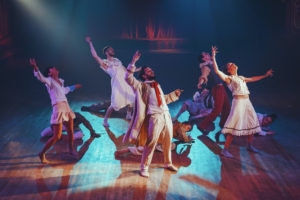Dance Camera West: A roundup of favourites from the Best of the Fest - Vancouver Ballet Society
- Home
- Reviews 2020 - 2023
- Dance Camera West: A roundup of favourites from the Best of the Fest

By Jenn Edwards
This year, with COVID wiping out stage performances all over the world, dance on screen has become especially relevant. The medium expands the possibilities of where and how dance can happen. It inflates, and complicates, notions of choreography, as location, cinematography and editing are as crucial to the choreographic process as the movement itself.
Dance Camera West, a screen dance festival founded in the United States in 2001, presented a hybrid program — online and in-person — in Los Angeles from January 7-31. The festival concluded with drive-in screenings in a parking lot at Santa Monica College, rounding up the Best of the Festival in two different programs showcasing a broad cross-section of dance films inspired by nature, music, politics, architecture and, naturally, the pandemic. Critics unable to attend were sent links to the films, which is how I was able to view them at home in Labrador City in northern Canada.
The 16 finalists, chosen from 260 entries, included films from the United States, Spain, Argentina, Sweden, Germany, Portugal, the UK and Australia. Contemporary dance saw the most screen time, but audiences were also treated to tango, swing, breakdance, aerial dance and even underwater performance.
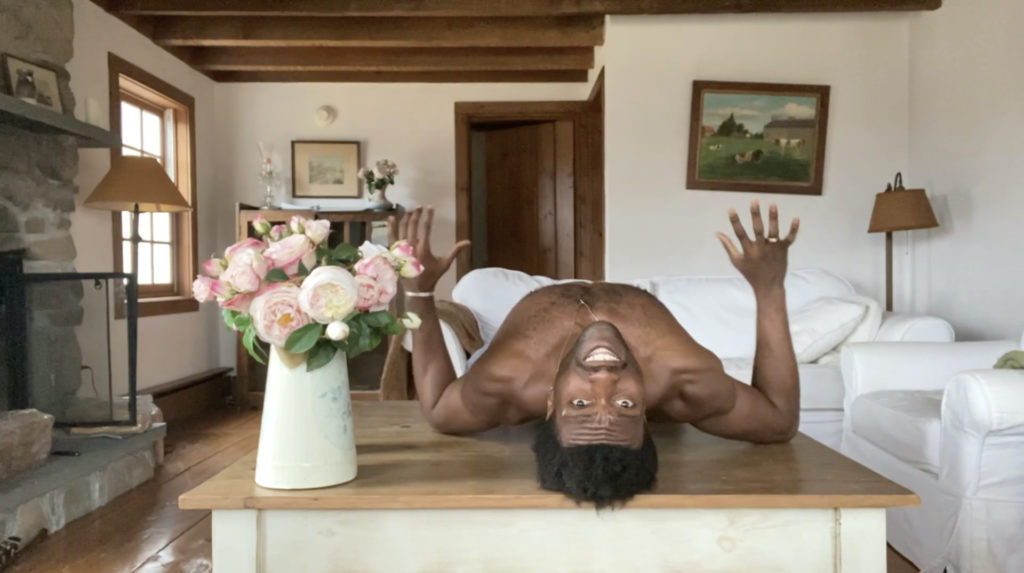
After the events of the past year, the program would hardly be complete without a quarantine film. Adi Halfin’s Earth Odyssey was shot and edited in April 2020, during the height of COVID lockdown, and is the official music video for Israeli singer-songwriter Asaf Avidan’s 2020 song of the same name. It features hypnotic improvised movement by top notch dancers, many of whom are former and current members of Batsheva Dance Company, dancing in their homes.
Berlin-based Halfin had a second music video chosen for the Best of the Festival program. Lost Horse, another song by Avidan, is paired with footage of contemporary dance power couple Bobbi Jene Smith and Or Schraiber living candidly in their home, and dancing the ever-evolving dynamics of a romantic relationship in ordinary spaces. For these two winning films, Halfin received an Outstanding Achievement Award.
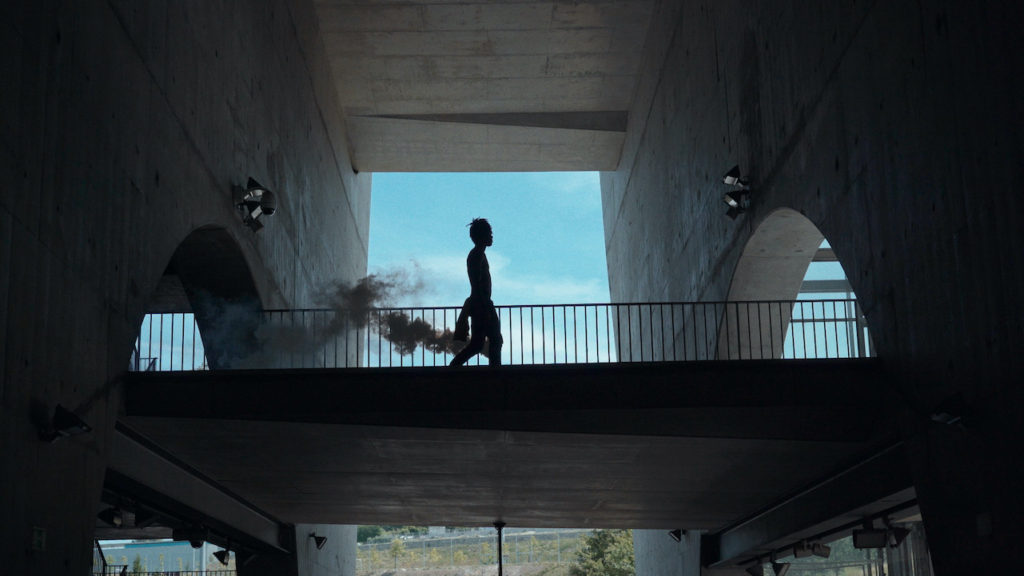
A second Outstanding Achievement Award went to Portuguese filmmaker Henrique Pina, for Beast and Dusk. Similar in tone, movement quality and cinematographic approach, these films seem to be two parts of the same series. They both explore human movement in relationship to architecture, portraying a visceral sense of bodies launching attacks on architectural structures. Beast, a collaboration between Pina and choreographer Victor Hugo Pontes, was filmed at Braga Municipal Stadium in Portugal, an immense, futuristic-looking structure with plenty of nooks and crannies for the dancers to revel in. Armed with colourful hoodies and white flags, a gang of male dancers takes over the stadium with parkour-like speed and vigour. In a surprising conclusion, they tangle their bodies inside their hoodies in such a way that they become a pack of strange two-limbed creatures loping across the stadium field.
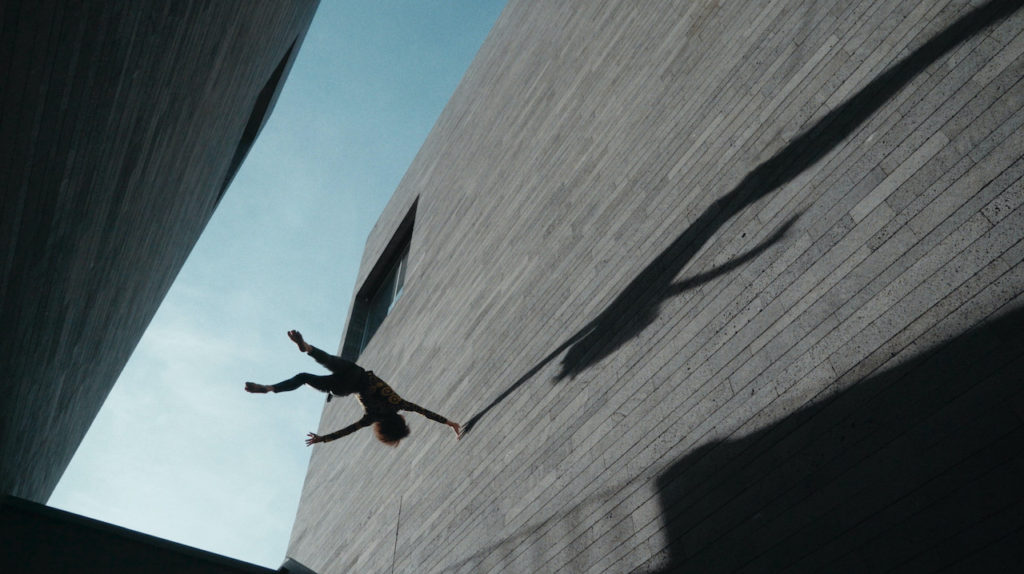
Dusk features solo aerial dance at Mudas Contemporary Art Museum, on Portugal’s Madeira Island. Dancer Magalie Lanriot hangs from ropes cast off the side of the building, performing what looks like a duet with the wall. It’s captivating to see aerial dancing through a cinematic framework; filmed from below, the sky becomes a back wall and the side of the building becomes the floor, jumbling the viewer’s sense of gravity.
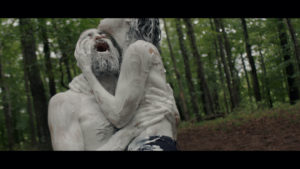
Some films, especially those made by American artists, lean more heavily into politics. Second Seed, by New York-based company Baye & Asa, a response to D.W. Griffith’s 1915 film, Birth of a Nation, which played a role in stoking racism in America. Cutting between a forest and a blackbox theatre space, the film dramatizes the racial tensions spurred by the original film, using intricate contemporary ensemble work and partnering, body paint and text pulled from the silent film’s captions.
Escape, directed and choreographed by American dance artist Heidi Duckler, was filmed on location in Chile, where her company was touring and happened to witness protests over the rising costs of living and growing inequality in the country. It features three dancers performing contemporary movement in abandoned spaces, spliced with footage from talk shows, newscasts and protests in Chile, creating a thought-provoking documentary-style dance film touching on the dangers of free market capitalism, corrupt leadership and COVID denial.
An award for Best Screen Adaptation went to Clowns, the film version of Hofesh Shechter’s 2016 work, originally created on Nederlands Dans Theater. Filmed at the Rivoli Ballroom in London, and directed by Shechter, who also wrote the music, Clowns follows the descent of its ten dancers from jester-like jigs into a stylized massacre, juxtaposing levity and violence in Schechter’s signature way. The film places the viewer in the centre of the action, which sometimes blurs in and out of focus, capturing the chaotic, driving rhythm of the choreography.
Dance Camera West also gave two of the finalists Best of the Festival Awards. One went to Scotland-based movement artist Robbie Synge for Forest Floor, an endearing documentation of his work with performance artist Julie Cleves, who uses a wheelchair and has limited use of her limbs. In the film, the pair devise ways to mobilize Cleves through the forest, both in and out of her chair, and explore ways of moving together reminiscent of contact improvisation. The second award went to Garry Stewart, artistic director of Australian Dance Theatre, for The Circadian Cycle, in which stunning South Australian landscapes provide a backdrop for movement from his 2018 stage work, The Beginning of Nature.
While it’s impossible to capture the essence of the genre on a global scale with just 16 films, Dance Camera West’s festival roundup delivered an inspired sampling of styles, themes and approaches to dance for the camera across four continents.
